Kybele
View All Tags
In her Phrygian origins, Kybele was closely tied to mountains and wild landscapes, often depicted seated on a throne flanked by lions or with a lion at her side. This imagery symbolized her dominion over untamed nature and her role as a protector of fertility and life. Her connection to the earth made her a vital figure in agricultural societies, where she was revered for ensuring bountiful harvests and the continuation of natural cycles. In Phrygian myth, she was sometimes linked to the deity Attis, her consort or priest, whose death and resurrection symbolized the cycles of life and renewal.
When Kybele’s worship spread to ancient Greece, she was associated with other maternal deities, such as Rhea, the mother of the Olympian gods. The Greeks adopted elements of her cult but often reinterpreted her within their own pantheon. Similarly, in Rome, she was introduced as Magna Mater (“Great Mother”) in the 3rd century BCE during the Second Punic War, when her cult was officially established in the city. Her Roman followers emphasized her role as a protector of the state, aligning her with civic stability and prosperity.
The cult of Kybele was known for its ecstatic and sometimes frenzied rituals. Her priests, known as Galli, were eunuchs who devoted themselves entirely to her service, symbolizing their separation from the mundane and their commitment to the goddess. These rituals often included music, drumming, dancing, and acts of self-flagellation, reflecting the intense emotional connection between worshippers and the deity. The annual spring festival in honor of Kybele, known as the Megalesia, celebrated her with public processions, games, and sacrifices.

Akmoneia, Phrygia 2nd-1st centuries BCE
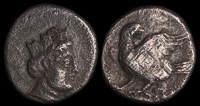
Alexandria Eschate 285-280 BCE
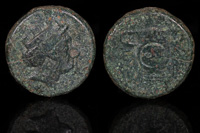
Hebryzelmis 389-383 BCE
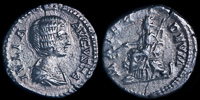
Julia Domna 205 CE
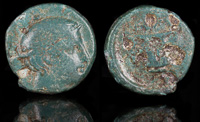
Kotys I 383-359 BCE
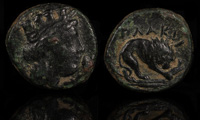
Plakia, Mysia 4th century BCE
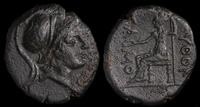
Samothrace 280 BCE
